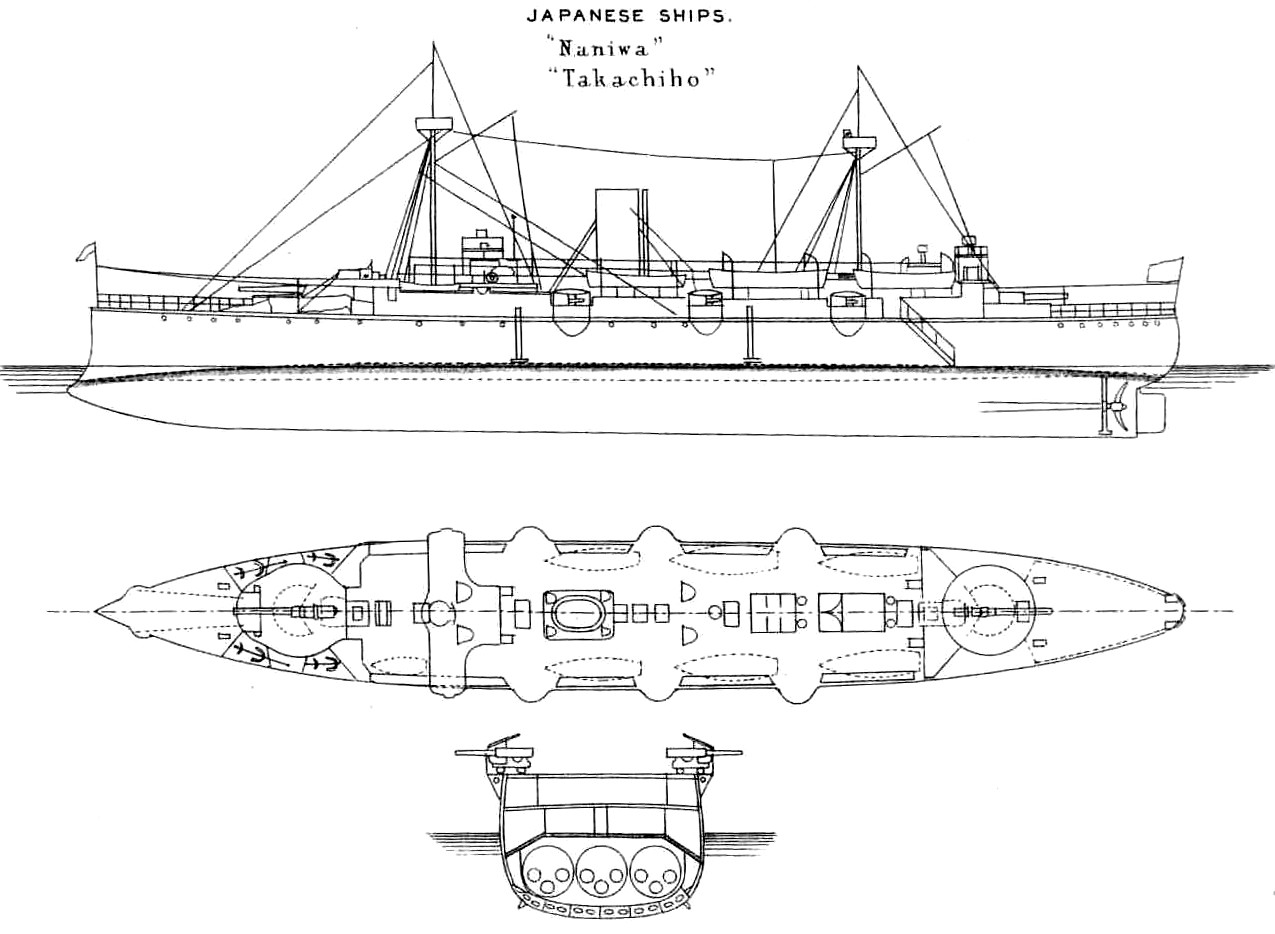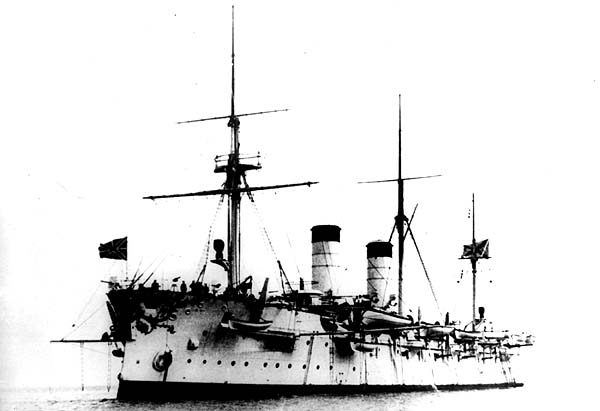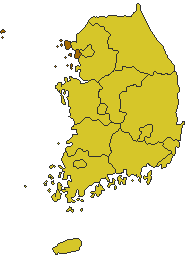|
Japanese Cruiser Naniwa
was the lead ship of her class of two protected cruisers built for the Imperial Japanese Navy (IJN) in the 1880s. As Japan lacked the industrial capacity to construct such vessels, the ship was designed and built in the United Kingdom. She participated in the First Sino-Japanese War of 1894–1895, playing a major role in the Battle of the Yalu River and lesser roles in the Battles of Port Arthur, Weihaiwei, the Pescadores Campaign and the invasion of Taiwan. ''Naniwa'' played a minor role in the Russo-Japanese War of 1904–1905 where she participated in the Battle of Chemulpo Bay, briefly helped to blockade Port Arthur at the beginning of the war, helped to sink a Russian armored cruiser during Battle off Ulsan and participated in the climactic defeat of the Imperial Russian Navy in the Battle of Tsushima. After the war the ship was relegated to auxiliary roles and served as a survey and fisheries protection ship. ''Naniwa'' ran aground in the Kurile Islands north of the ... [...More Info...] [...Related Items...] OR: [Wikipedia] [Google] [Baidu] |
Empire Of Japan
The also known as the Japanese Empire or Imperial Japan, was a historical nation-state and great power that existed from the Meiji Restoration in 1868 until the enactment of the post-World War II 1947 constitution and subsequent formation of modern Japan. It encompassed the Japanese archipelago and several colonies, protectorates, mandates, and other territories. Under the slogans of and following the Boshin War and restoration of power to the Emperor from the Shogun, Japan underwent a period of industrialization and militarization, the Meiji Restoration, which is often regarded as the fastest modernisation of any country to date. All of these aspects contributed to Japan's emergence as a great power and the establishment of a colonial empire following the First Sino-Japanese War, the Boxer Rebellion, the Russo-Japanese War, and World War I. Economic and political turmoil in the 1920s, including the Great Depression, led to the rise of militarism, nationa ... [...More Info...] [...Related Items...] OR: [Wikipedia] [Google] [Baidu] |
United Kingdom
The United Kingdom of Great Britain and Northern Ireland, commonly known as the United Kingdom (UK) or Britain, is a country in Europe, off the north-western coast of the continental mainland. It comprises England, Scotland, Wales and Northern Ireland. The United Kingdom includes the island of Great Britain, the north-eastern part of the island of Ireland, and many smaller islands within the British Isles. Northern Ireland shares a land border with the Republic of Ireland; otherwise, the United Kingdom is surrounded by the Atlantic Ocean, the North Sea, the English Channel, the Celtic Sea and the Irish Sea. The total area of the United Kingdom is , with an estimated 2020 population of more than 67 million people. The United Kingdom has evolved from a series of annexations, unions and separations of constituent countries over several hundred years. The Treaty of Union between the Kingdom of England (which included Wales, annexed in 1542) and the Kingdom of Scotland in 170 ... [...More Info...] [...Related Items...] OR: [Wikipedia] [Google] [Baidu] |
Survey Ship
A survey vessel is any type of ship or boat that is used for underwater surveys, usually to collect data for mapping or planning underwater construction or mineral extraction. It is a type of research vessel, and may be designed for the purpose, modified for the purpose or temporarily put into the service as a vessel of opportunity, and may be crewed, remotely operated, or autonomous. The size and equipment vary to suit the task and availability. Role The task of survey vessels is to map the bottom, and measure the characteristics of the benthic zone, full water column, and surface for the purpose of: * hydrography, the measurement and description of the physical features of oceans and other natural bodies of water, and the prediction of their change over time, for the primary purpose of safety of navigation and in support of other activities associated with those bodies of water, * general oceanography, the scientific study of the oceans, * mapping of marine habitats as part ... [...More Info...] [...Related Items...] OR: [Wikipedia] [Google] [Baidu] |
Battle Of Tsushima
The Battle of Tsushima (Japanese:対馬沖海戦, Tsushimaoki''-Kaisen'', russian: Цусимское сражение, ''Tsusimskoye srazheniye''), also known as the Battle of Tsushima Strait and the Naval Battle of Sea of Japan (Japanese: 日本海海戦, Nihonkai''-Kaisen'') in Japan, was a List of battles of the Russo-Japanese War, major naval battle fought between Russia and Japan during the Russo-Japanese War. It was naval history's first, and so far the last, decisive sea battle fought by modern steel battleship fleets and the first naval battle in which wireless telegraphy (radio) played a critically important role. It has been characterized as the "dying echo of the old era – for the last time in the history of naval warfare, Ship of the line, ships of the line of a beaten fleet surrendered on the high seas". It was fought on 27–28 May 1905 (14–15 May in the Julian calendar then in use in Russia) in the Tsushima Strait located between Korea and southern Japan ... [...More Info...] [...Related Items...] OR: [Wikipedia] [Google] [Baidu] |
Imperial Russian Navy
The Imperial Russian Navy () operated as the navy of the Russian Tsardom and later the Russian Empire from 1696 to 1917. Formally established in 1696, it lasted until dissolved in the wake of the February Revolution of 1917. It developed from a smaller force that had existed prior to Tsar Peter the Great's founding of the modern Russian navy during the Second Azov campaign in 1696. It expanded in the second half of the 18th century and reached its peak strength by the early part of the 19th century, behind only the British and French fleets in terms of size. The Imperial Navy drew its officers from the aristocracy of the Empire, who belonged to the state Russian Orthodox Church. Young aristocrats began to be trained for leadership at a national naval school. From 1818 on, only officers of the Imperial Russian Navy were appointed to the position of Chief Manager of the Russian-American Company, based in Russian America (present-day Alaska) for colonization and fur-trade developme ... [...More Info...] [...Related Items...] OR: [Wikipedia] [Google] [Baidu] |
Battle Off Ulsan
The naval Battle off Ulsan (Japanese: 蔚山沖海戦 ''Urusan'oki kaisen''; Russian: Бой в Корейском проливе, ''Boi v Koreiskom prolive''), also known as the Battle of the Japanese Sea or Battle of the Korean Strait, took place on 14 August 1904 between cruiser squadrons of the Imperial Russian Navy and the Imperial Japanese Navy during the Russo-Japanese War, four days after the Battle of the Yellow Sea. Background At the start of the Russo-Japanese War, the bulk of the Russian Pacific Fleet was blockaded within the confines of Port Arthur by the Imperial Japanese Navy. However, the Russian subsidiary naval base at Vladivostok, although shelled by a Japanese squadron under the command of Vice Admiral Dewa Shigetō in March 1904, remained largely undamaged. Located at Vladivostok was a garrison force consisting of the light cruiser and auxiliary cruiser and a stronger Vladivostok Independent Cruiser Squadron consisting of the armored cruisers , , and . ... [...More Info...] [...Related Items...] OR: [Wikipedia] [Google] [Baidu] |
Armored Cruiser
The armored cruiser was a type of warship of the late 19th and early 20th centuries. It was designed like other types of cruisers to operate as a long-range, independent warship, capable of defeating any ship apart from a battleship and fast enough to outrun any battleship it encountered. For many decades, naval technology had not advanced far enough for designers to produce a cruiser which combined an armored belt with the long range and high speed required to fulfill its mission. For this reason, beginning in the 1880s and 1890s, many navies preferred to build protected cruisers, which only relied on a light armored deck to protect the vital parts of the ship. However, by the late 1880s, the development of modern rapid-fire breech-loading cannon and high-explosive shells made the reintroduction of side armor a necessity. The invention of face-hardened armor in the mid-1890s offered effective protection with less weight than previously. Varying in size, the armored cruiser was ... [...More Info...] [...Related Items...] OR: [Wikipedia] [Google] [Baidu] |
Battle Of Chemulpo Bay
The Battle of Chemulpo Bay was a naval battle in the Russo-Japanese War (1904–1905), which took place on 9 February 1904, off the coast of present-day Incheon (then called Chemulpo), Korea. Background The opening stage of the Russo-Japanese War began with a pre-emptive strike by the Imperial Japanese Navy against the Russian Pacific Fleet spread among Port Arthur, Vladivostok, and Chemulpo Bay (now part of Incheon, Korea). Command of the Chemulpo operation was given to Rear Admiral Uryū Sotokichi, with six cruisers, three to eight torpedo boats (depending on sources), the aviso (dispatch boat) ''Chihaya'', three transports and 2,500 ground troops. Chemulpo also had strategic significance, as it was the main port for the Korean capital of Seoul, and was also the main invasion route used previously by Japanese forces in the First Sino-Japanese War of 1894. However, Chemulpo, with its wide tidal bore, extensive mudflats, and narrow, winding channels, posed a number of tactical ... [...More Info...] [...Related Items...] OR: [Wikipedia] [Google] [Baidu] |
Russo-Japanese War
The Russo-Japanese War ( ja, 日露戦争, Nichiro sensō, Japanese-Russian War; russian: Ру́сско-япóнская войнá, Rússko-yapónskaya voyná) was fought between the Empire of Japan and the Russian Empire during 1904 and 1905 over rival imperial ambitions in Manchuria and the Korean Empire. The major theatres of military operations were located in Liaodong Peninsula and Mukden in Southern Manchuria, and the Yellow Sea and the Sea of Japan. Russia sought a warm-water port on the Pacific Ocean both for its navy and for maritime trade. Vladivostok remained ice-free and operational only during the summer; Port Arthur, a naval base in Liaodong Province leased to Russia by the Qing dynasty of China from 1897, was operational year round. Russia had pursued an expansionist policy east of the Urals, in Siberia and the Far East, since the reign of Ivan the Terrible in the 16th century. Since the end of the First Sino-Japanese War in 1895, Japan had feared Russian en ... [...More Info...] [...Related Items...] OR: [Wikipedia] [Google] [Baidu] |
Japanese Invasion Of Taiwan (1895)
The Japanese invasion of Taiwan (; ) (May–October 1895) was a conflict between the Empire of Japan and the armed forces of the short-lived Republic of Formosa following the Qing dynasty's cession of Taiwan to Japan in April 1895 at the end of the First Sino-Japanese War. The Japanese sought to take control of their new possession, while the Republican forces fought to resist Japanese occupation. The Japanese landed near Keelung on the northern coast of Taiwan on 29 May 1895, and in a five-month campaign swept southwards to Tainan. Although their advance was slowed by guerrilla activity, the Japanese defeated the Formosan forces (a mixture of regular Chinese units and local Hakka militias) whenever they attempted to make a stand. The Japanese victory at Baguashan on 27 August, the largest battle ever fought on Taiwanese soil, doomed the Formosan resistance to an early defeat. The fall of Tainan on 21 October ended organised resistance to Japanese occupation, and inaugurated ... [...More Info...] [...Related Items...] OR: [Wikipedia] [Google] [Baidu] |
Battle Of Weihaiwei
The Battle of Weihaiwei (Japanese: was a battle of the First Sino-Japanese War. It took place between 20 January and 12 February 1895, in Weihai, Shandong Province, China, between the forces of Japan and Qing China. In early January 1895, the Japanese landed forces in eastern Shandong positioning forces behind the Chinese naval base at Weihaiwei. Through a well-coordinated offensive of both naval and land forces, the Japanese destroyed the forts and sank much of the Chinese fleet. With the Shandong and Liaoning peninsulas under Japanese control, the option for a pincer attack against the Chinese capital, Beijing, was now a possibility. This strategic threat forced the Chinese to sue for peace and led to the war's end in April 1895. Background Following its victory at the Battle of Lushunkou on 21 November 1894, the next strategic objective of the Japanese campaign was to neutralize the Qing naval base at Weihaiwai on Shandong Peninsula. This would give Japan total control o ... [...More Info...] [...Related Items...] OR: [Wikipedia] [Google] [Baidu] |








